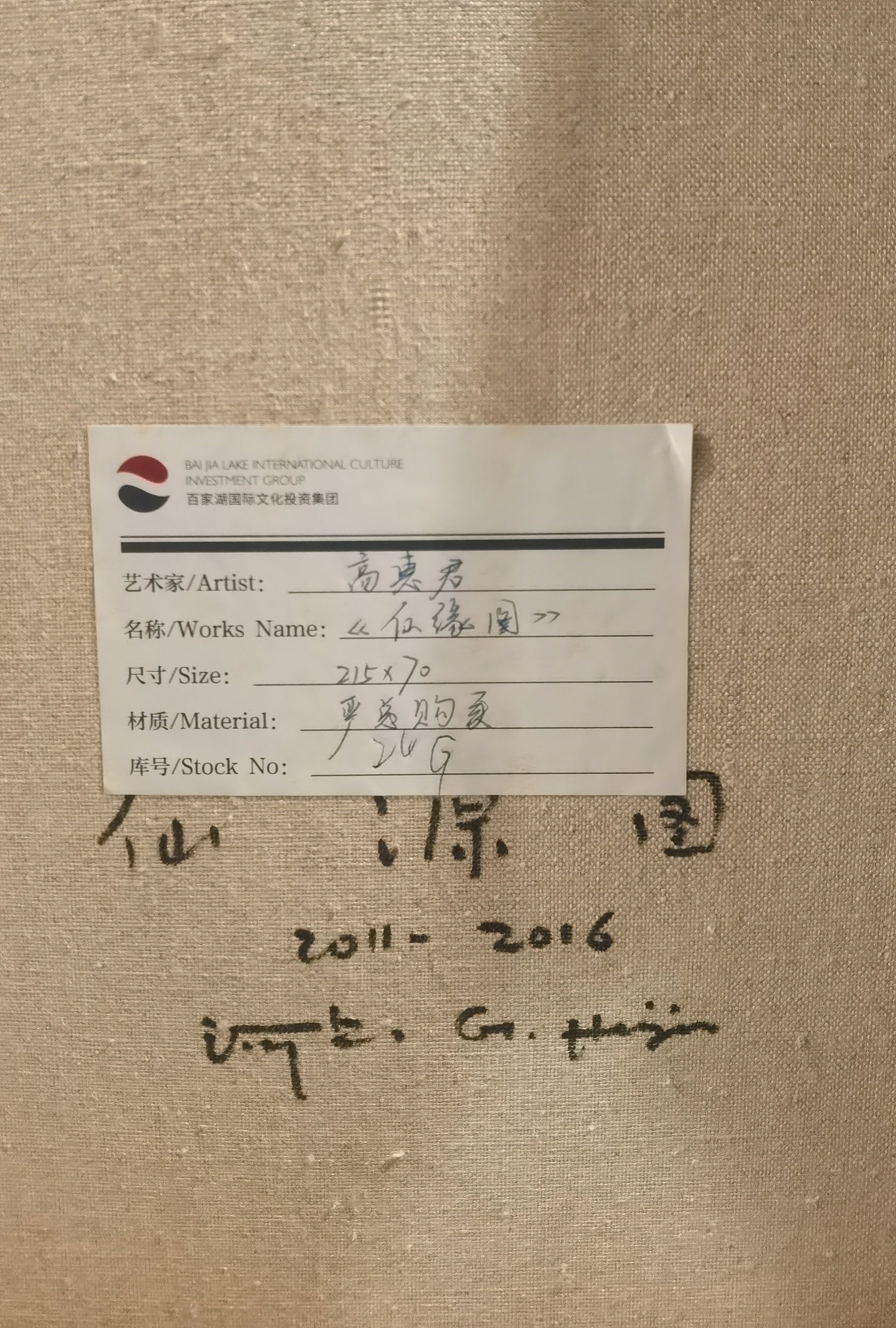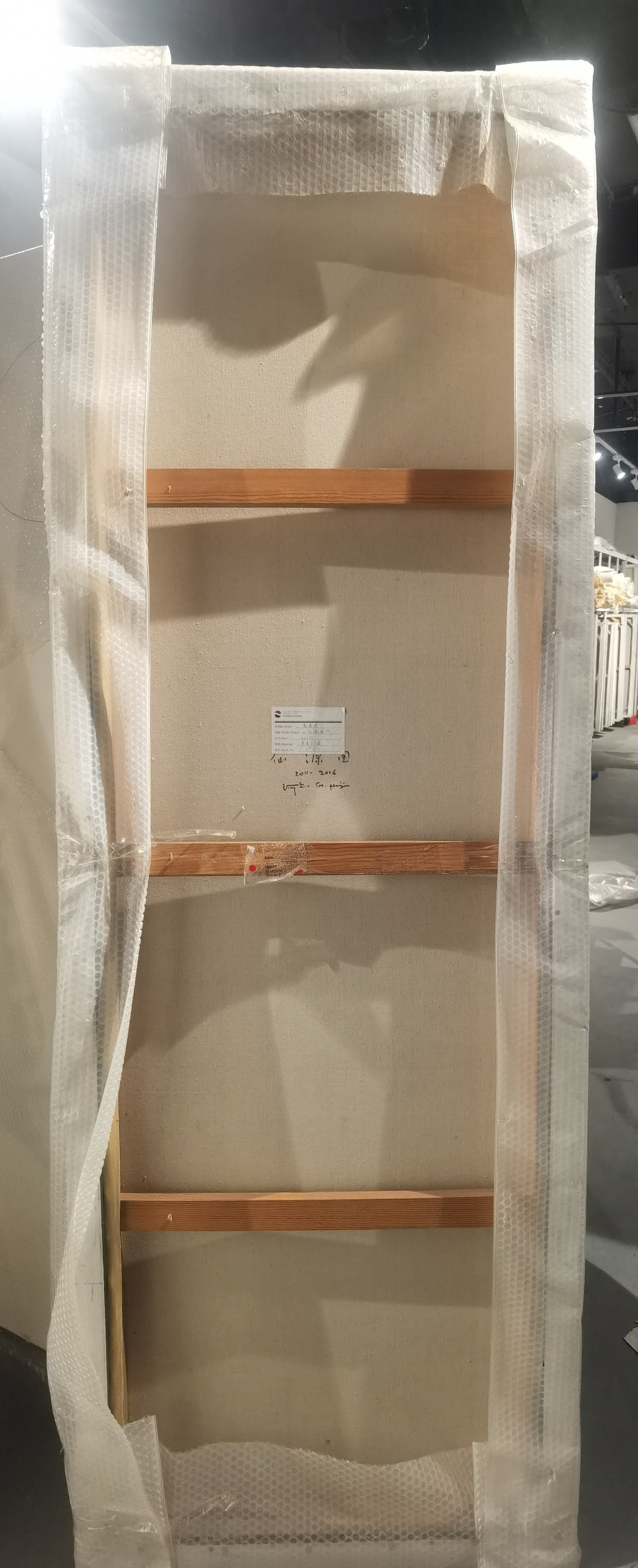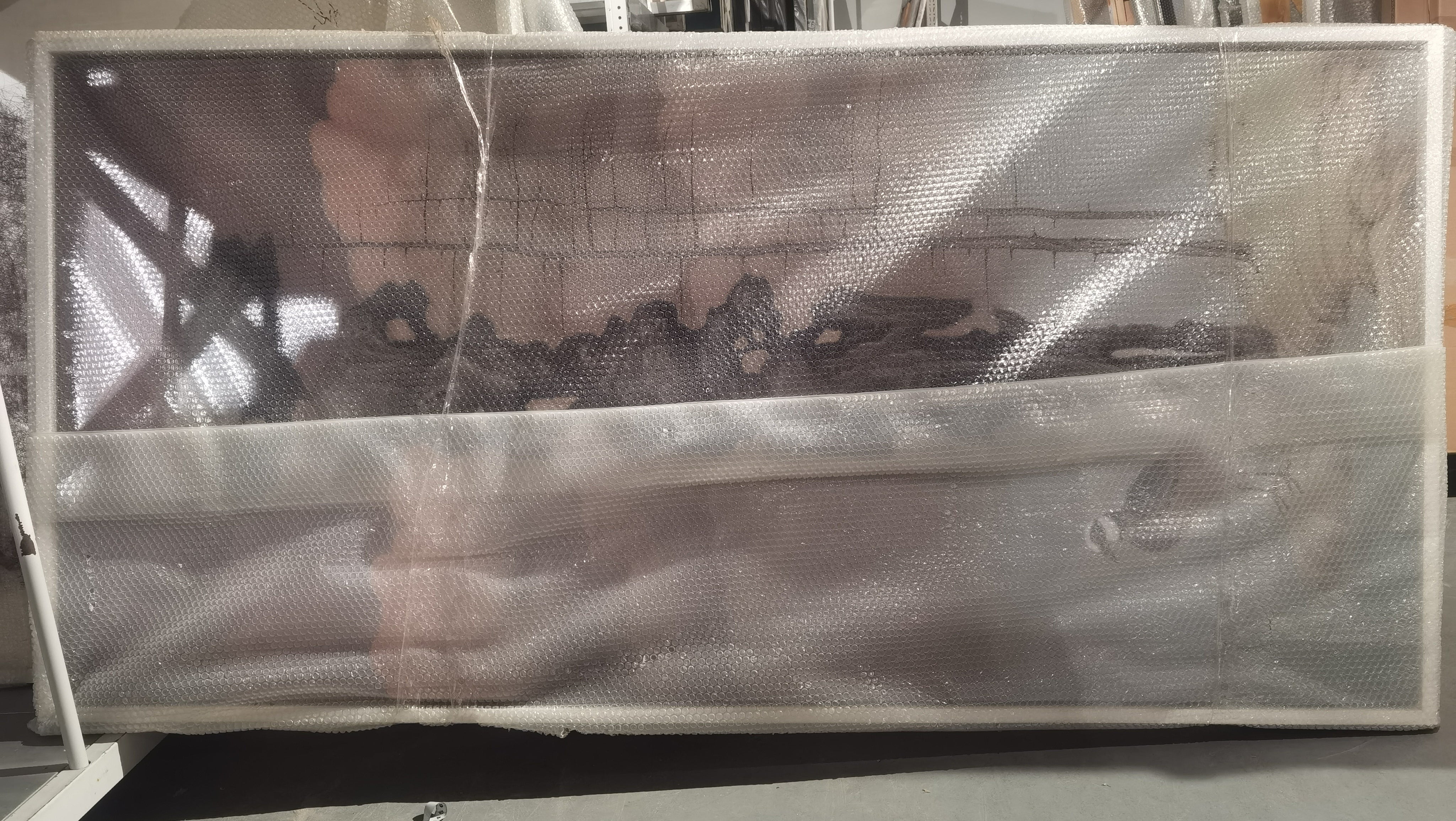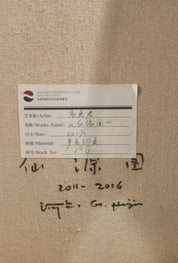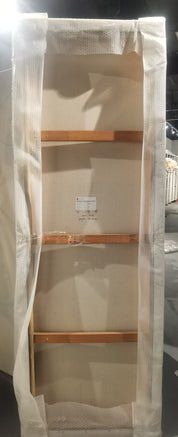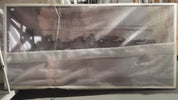Fairy Edge Map
Huijun Gao
Artwork Details
Artwork Description
Title: Fairy Edge Map
Artist: Huijun Gao
Date: 2016
Medium: Acrylic on canvas
Dimensions: 215 x 70 cm
1. Artwork Identification
Fairy Edge Map is a vertical-format acrylic landscape by renowned Chinese painter Huijun Gao. Executed in 2016, the composition stretches gracefully at 215 x 70 cm, presenting a poetic and dreamlike vision of mist-laden mountains and finely articulated trees, all rendered in a delicately subdued palette. The Title: evokes a liminal, otherworldly terrain—suggestive of mythic borders between earth and spirit.
2. Artistic Style and Influences
This painting exemplifies Gao’s mature visual language: a subtle synthesis of traditional Chinese landscape techniques with modern materials and atmospheric abstraction. The precise, brush-dense treatment of foliage and topography recalls Song Dynasty painting traditions, while the pale tonalities and minimalist negative space speak to a contemporary sensibility. The interplay of texture, mist, and structure demonstrates Gao’s command of mood and form.
3. Historical Context
Completed in 2016, Fairy Edge Map belongs to a period when Gao was deeply immersed in refining his unique approach to Chinese landscape painting. Working from his Songzhuang studio in Beijing, Gao continued to develop works that resisted direct commentary on modern issues, instead exploring internal states and natural metaphors. This work’s meditative tone aligns with the philosophical core of Gao’s oeuvre—one that privileges personal reflection over cultural critique.
4. Provenance
Provenance documentation can be provided upon contact.
5. Condition and Conservation
The painting is in very good condition. The acrylic surface is stable and well-preserved, with no apparent flaking, discoloration, or structural damage to the canvas.
6. Artistic Significance
Fairy Edge Map is a striking example of Huijun Gao’s ability to conjure vast spiritual and emotional spaces through the language of landscape. The gentle layering of mists and mountains imparts a sense of quiet ascension—an invitation to transcend the material world. This piece not only highlights Gao’s technical finesse but also his philosophical depth, offering viewers a contemplative journey through an imagined yet timeless natural realm.


